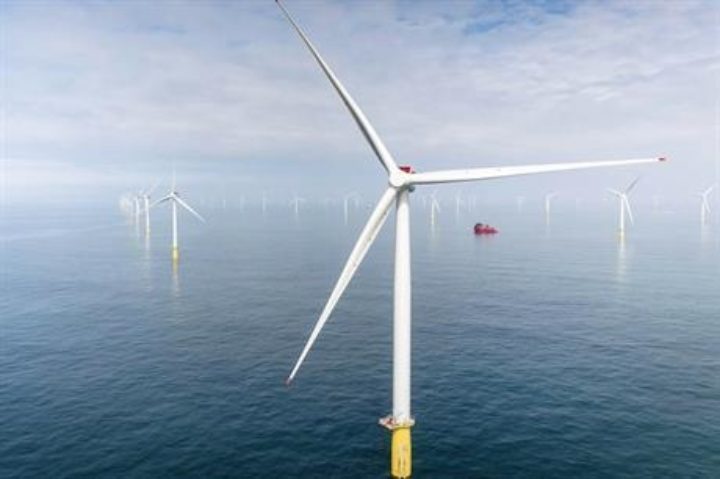Damaged investor confidence, three years on
Years have passed since MPs penned an influential report, has anything changed?
By Jonny Marshall
Share
Last updated:
Back in March 2016, the now-defunct Energy and Climate Change Select Committee (ECCC) released one of its most important reports. Following years of uncertainty in energy policy – induced by changing governments, ministers and policies – the Committee took a look at how energy investors' confidence had been damaged.
Focussing almost entirely on the power sector, the report detailed how private investors were becoming less willing to put their cash on the line to fund new energy infrastructure - and were demanding higher returns when they did. Bearing in mind that attracting private money and eventually allowing the state to wash its hands with the power sector was a main aim of the 2013 Energy Act, one can conclude that this is quite a big deal.
Now, three years later, it is worth taking a look back at what the MPs were told, and what they recommended that Government should do to ensure new capacity continued to be built and that bills were kept as low as possible.
To-do list

The MPs laid into governments – current and previous – for sudden, numerous and inconsistent policy making. They criticised a lack of a long-term vision and concluded that investor impacts were not taken into account when decisions were being made.
As such, they recommended three key means through which the private sector could regain some confidence in policymakers and avoid a cliff-edge that was set to arrive in 2020.
These were:
- clarity over the future of the Contracts for Difference (CfD) scheme, the main mechanism for supporting low-carbon generation
- providing certainty over the Levy Control Framework (LCF), designed to cap expenditure on low-carbon build
- informing market participants of the post-2020 direction of the Carbon Price Floor.
While Government may argue that it has set out a clear path for the CfD scheme, its actions are not without criticism. Aside from an unwillingness to run a Pot 1 auction, in which onshore wind and solar can compete, the stop-start schedule of Pot 2 auctions will also not be helping.
The 2019 auction – pencilled in for May 29 – will divvy out £60m of support, much less than expected. Add to this the lack of a regular calendar of auctions for coming years, the outline of which would help developers plan for the future, and it is possible to argue that the ECCC recommendations are not being heeded.
One area where certainty was given, though, was the Levy Control Framework. Frozen and rebranded, the end of the LCF coincided with the retirement of both the Renewables Obligation and Feed-in-Tariff schemes, which are no longer available for new entrants. While placing full faith in CfDs to deliver new capacity, there are reasons to doubt its ability to cover all of the bases.
With Brexit looming, it would be hard to claim with a straight face that there is clarity in UK carbon pricing. Currently, industry is not aware if it will be liable for ETS costs during the first quarter of 2019. Post-Brexit, the government is planning a replacement £16/tonne levy if needed, but has also said that it may change the level in the future. Hardly the basis on which investors can be confident to put their money on the line.
The Carbon Price Floor, of course, would be well north of £20/tonne had it maintained its original trajectory. Instead it remains frozen at £18/tonne, a level high enough to kick coal off the system most of the time, but short of that needed to convince investors to back new generation capacity in the UK.
To sum up, it is hard to see a great deal more clarity than there was three years ago. Even putting Brexit to one side, domestic policy remains full of holes.
Figures

The Renewable Energy Planning Database (REPD) lets us look into how policies manifest into planned new capacity.
It won’t be news to many, but the figures shine a light on how more and more eggs are being piled into the offshore wind basket.
Since the ECCC report was released in 2016, just 10 onshore wind projects have been granted planning permission. Six of these are now in operation, with a total capacity of just 70 MW, with four more (totalling 35 MW) under construction.
The picture isn’t much brighter for solar PV; 29 projects have received planning permission since 2016, with a total capacity of 135 MW.
By contrast, REPD figures show just how much offshore wind is being supported, with eight projects granted planning permission (total capacity 4.6 GW). Totalling upwards of 95% of the combined wind and solar pipleline, these figures show just how much current policy favours offshore wind over its land-based, cheaper cousin.
Trade bodies have warned of job losses and plummeting investment on the back of the onshore wind stasis, and without a change in tune to re-open the door to land-based renewables, it is likely that this will continue.
A light on the horizon, however, is this summer’s Energy White Paper. Expected to cover a range of issues, from nuclear funding to shale gas, the document would be a perfect time for a rethink on policies currently stifling the sector.
Preparing for net zero
A final word should go to the Committee's overall conclusion on long-term policymaking.
Government needed, it said, a credible 'Carbon Plan' to deliver the legally-binding fifth carbon budget, ensuring that Britain's greenhouse gas emissions are at least 57% lower in 2028-32 than in the baseline year of 1990.
The Government's Clean Growth Strategy, launched in October 2017, was designed to be that credible 'carbon plan'. However, by its own admission it does not contain sufficient policy action to deliver the 57% cut.
Add in now the likelihood that the UK will shortly set a target of reducing emissions to net zero around mid-century - and that this would make a case for deeper cuts than 57% in 2028-32 - and the need for a genuinely credible delivery plan becomes even more stark.
And should the potential cost of delivering deeper cuts come to the fore, another one of the Committee's conclusions was that a lack of clarity was driving up the cost of energy - now could be the time for policy certainty.
Share